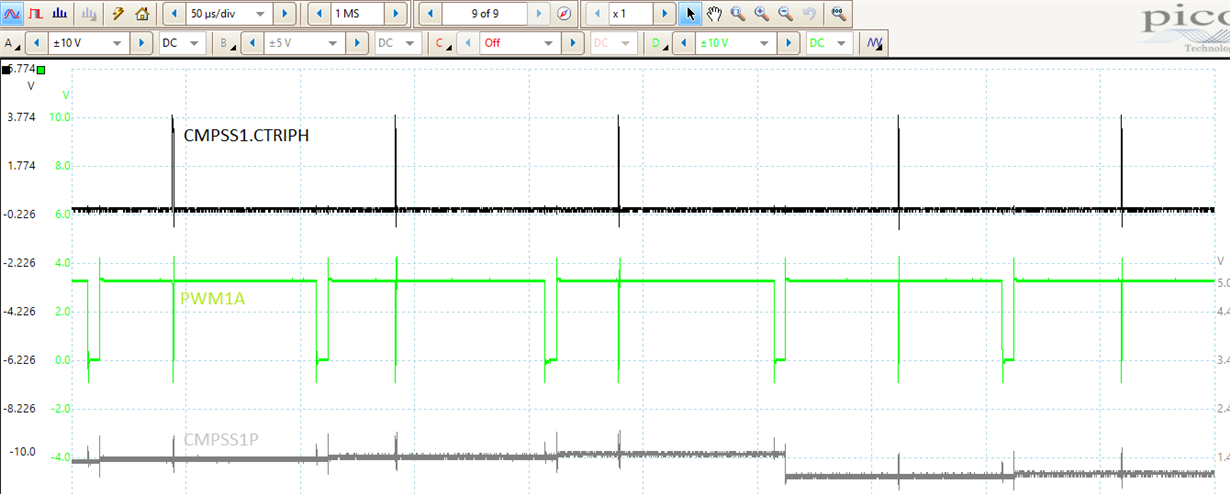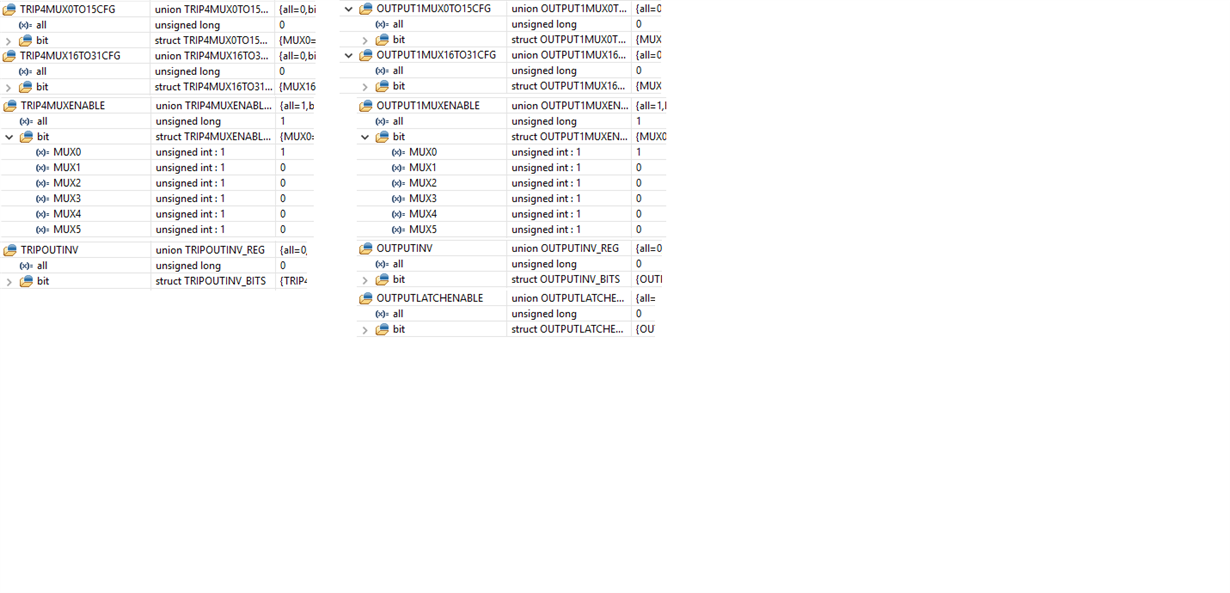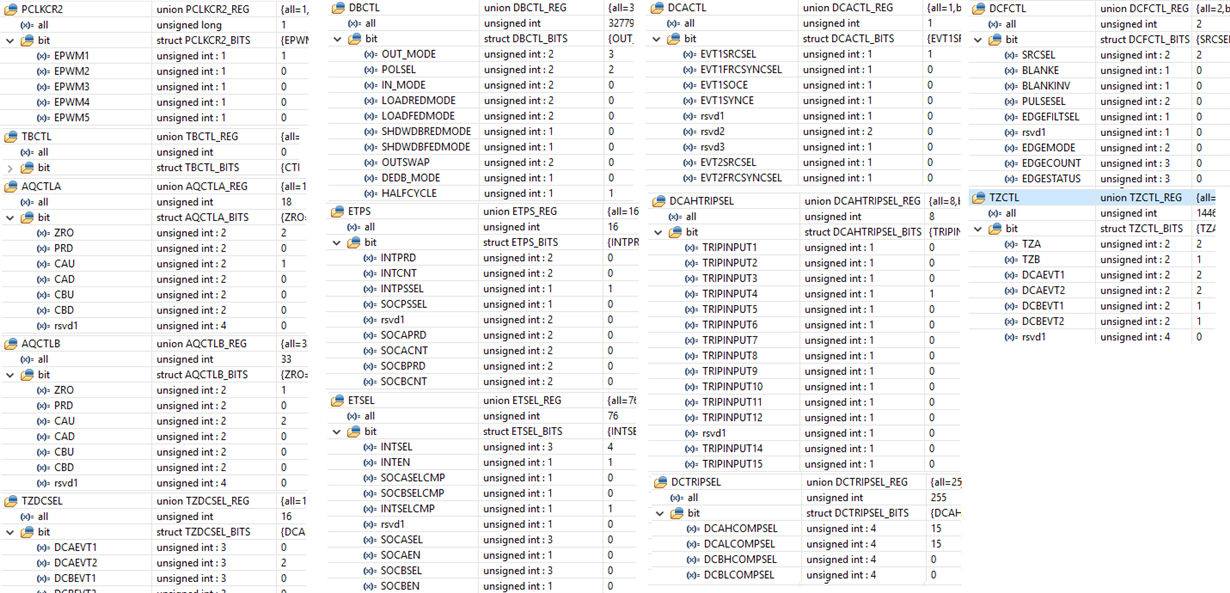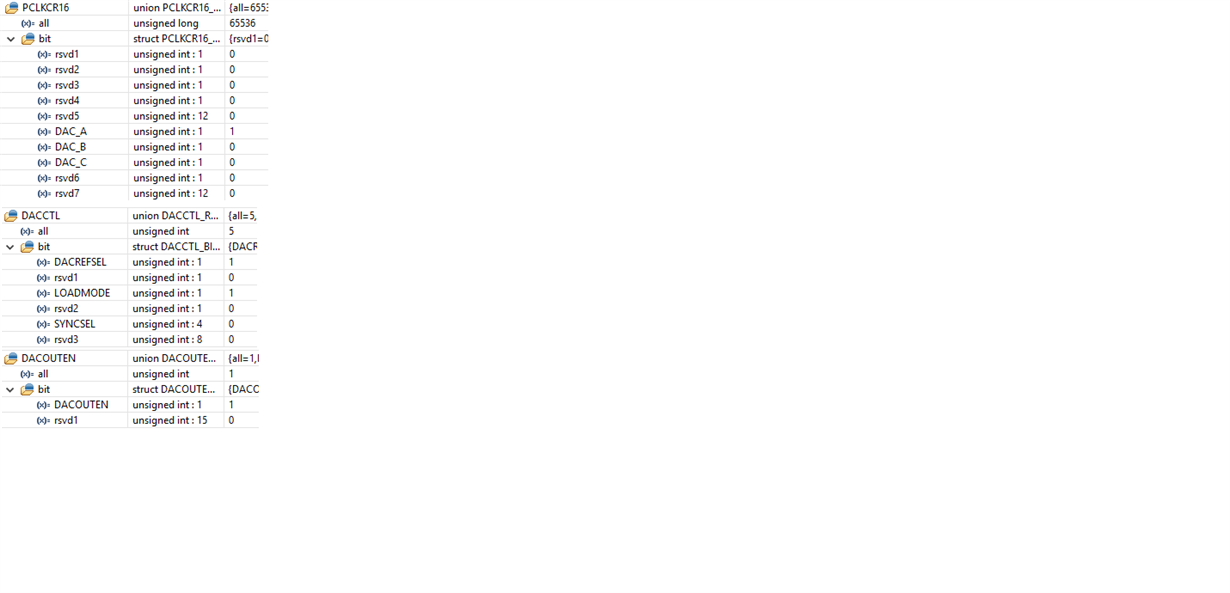Hi
I'm testing Comparator Ramp generator features for peak current control implementation.
In the program, I use CMPSS1P to compare to ramp value. The result(CMPSS1.CTRIPH) is used
as a DC trip event (cycle-by-cycle) to trip PWM1A to high impedance in the remain part
of the current PWM period.
I found some features are different from what I imaged:
1. I set CMPSS1.COMPCTL[CTRIPHSEL]and CMPSS1.COMPCTL[CTRIPOUTHSEL] to 2, so COMPSTS[COMPHSTS]
will be sent to PWM X-Bar, it will be sent to Output X-Bar (GPIO24) to check this signal.
I think COMPSTS[COMPHSTS] will remain high in a PWM period whenever it becomes high, but when
I check GPIO24, it will become high in a short time then remain low in the subsequent part
of the PWM period. Please see the waveforms below.
My question is why COMPSTS[COMPHSTS] goes low after it becomes high? Do I have any way to
keep COMPSTS[COMPHSTS] high in the remain part of PWM period (except using latched value)?
2. I think in a PWM cycle-by-cycle trip control, when a trip event becomes active, PWM output
will take trip action until the end of the current PWM period. But from above waveforms,
PWM output is only tripped when COMPSTS[COMPHSTS] becomes high and it resumes to normal mode in the
subsequent time of the current PWM period. This is different to type 2 PWM. Do I have any way
to remain trip action at the subsequent time of the current PWM period?
The project is attached for your review.
thanks,
Jiakai







